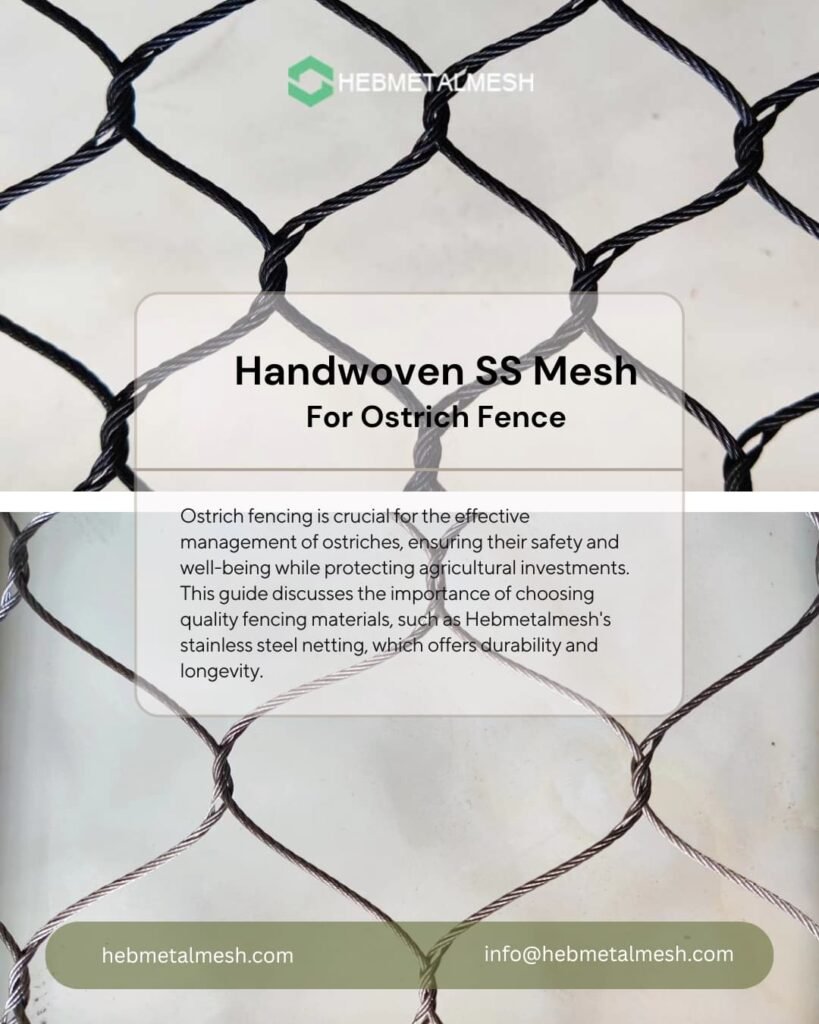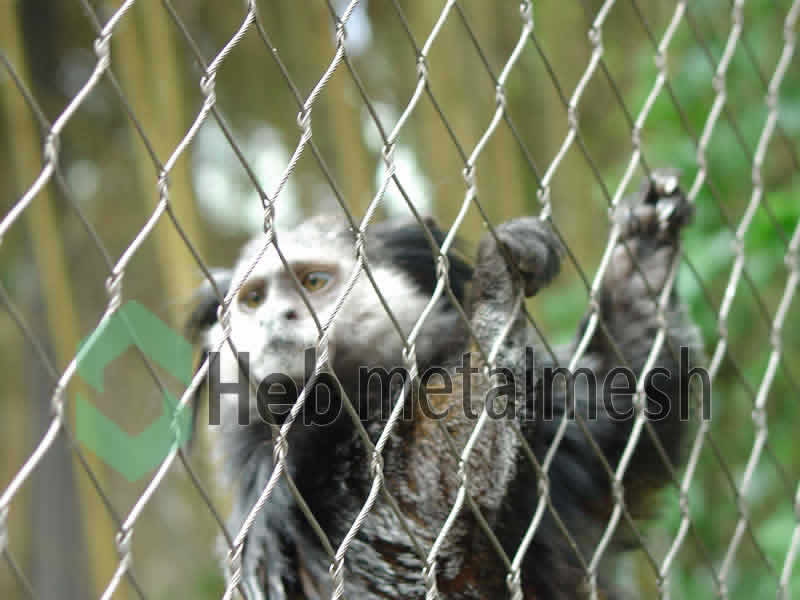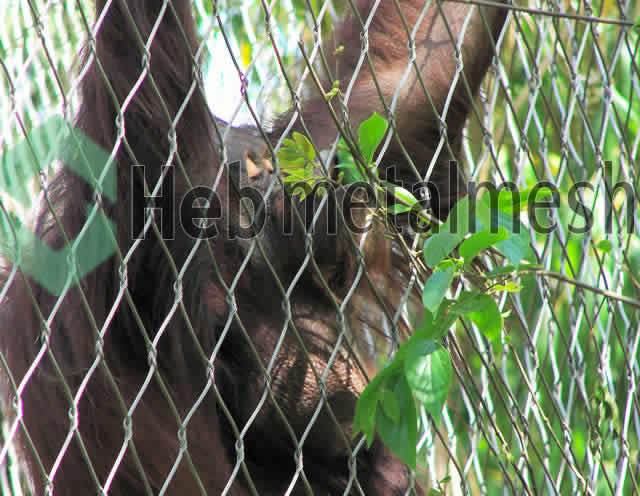Introduction to Ostrich Fencing
Ostrich fencing plays a pivotal role in the management and protection of ostriches and other large bird species. These birds, known for their impressive size and agility, require specially designed enclosures to ensure their safety and well-being. Unlike conventional fencing methods, ostrich fencing is tailored to address the unique physical characteristics and behaviors of these birds, providing a barrier that effectively prevents escapes while also deterring potential predators.
The essence of ostrich fencing lies in its ability to create a secure environment for both the birds and the surrounding agricultural operations. Ostriches are often raised for commercial purposes, including meat, feathers, and leather, making it crucial to establish a robust fencing system that minimizes risks. Additionally, improper fencing can lead to significant losses for farmers as freely roaming ostriches can cause damage to crops and property. Therefore, investing in quality fencing solutions is essential for any ostrich owner.
When considering the fencing materials, it is vital to select those that enhance durability and effectiveness. Hebmetalmesh, for instance, offers specialized fencing products that cater to the needs of ostrich farming. These materials are designed to withstand harsh environmental conditions while providing an impermeable barrier. The choice of fencing must account for the strength of the birds, as they can exert a significant amount of force when attempting to escape. As such, selecting the appropriate gauge and structure of the fence is imperative to ensuring its longevity and security.
In summation, ostrich fencing is not merely a physical barrier; it is an essential component in the sustainable management of these birds. By understanding the significance of proper fencing and choosing the right materials, owners can protect their investments while promoting the health and safety of their ostriches.
Why Choose Hebmetalmesh for Your Ostrich Fence Needs?
When considering the construction of an effective ostrich fence, selecting the right manufacturer is crucial. Hebmetalmesh has established itself as a premier handwoven stainless steel netting factory, specifically catering to the unique requirements of ostrich farming. Their commitment to quality and innovation makes them a top choice for those seeking durable and reliable fencing solutions.
One of the standout features of Hebmetalmesh’s ostrich fence panels and rolls is their exceptional durability. Constructed from high-grade stainless steel, these fences are designed to withstand harsh environmental conditions and resist corrosion over time. This means that farm owners can expect long-term functionality and minimal maintenance costs, a vital aspect when investing in animal containment solutions. The wear and tear resistance offered by Hebmetalmesh’s products ensures that they maintain their structural integrity, providing peace of mind to those managing ostrich populations.
Moreover, Hebmetalmesh has a proven expertise in developing effective containment solutions, specifically tailored to the characteristics of ostriches. Understanding the behavior of these large and often unpredictable birds, the company has designed their fencing materials to not only contain but also protect the animals. The quality of the netting ensures that ostriches are kept secure while minimizing the risk of injuries associated with weaker fencing options.
In addition to their commitment to producing high-quality ostrich fence systems, Hebmetalmesh emphasizes customer satisfaction by providing excellent service and support. Their team of professionals is equipped to assist clients in selecting the appropriate fencing solutions tailored to their specific needs. This personalized approach further solidifies Hebmetalmesh’s reputation as a leading provider in the ostrich fencing market.
Ostrich Fence Specifications: What’s Available?
When considering the implementation of an ostrich fence for both agricultural and protective purposes, it is essential to understand the specifications of the fencing options available. Hebmetalmesh offers a variety of ostrich fence panels and rolls, designed to meet diverse needs and preferences. The specifications include various dimensions, material options, and customization possibilities.
The maximum height of the ostrich fence panels reaches an impressive 30 feet, while the width can be up to 60 feet. This expansive range allows for effective enclosure of any area, making it suitable for large agricultural operations or private estates. The tall height is particularly beneficial for ensuring the safety of ostriches and other animals, preventing escapes and protecting them against potential predators.
Moreover, Hebmetalmesh understands that different projects may require specific sizes and configurations. Therefore, they provide customized roll options, catering to unique spatial requirements and preferences. This flexibility enables clients to design their fencing according to the layout of their land and the specific needs of the animals they are protecting.
As for materials, there are notably two options available: nature color and black oxide. The nature color finish offers a more organic look, blending seamlessly with natural landscapes, which can be particularly appealing for wildlife settings. On the other hand, the black oxide finish is effective in providing a more contemporary aesthetic while also enhancing durability against the elements. Choosing between these options may depend on personal preferences, the environment in which the ostrich fence will be installed, and the desired level of visibility.
In conclusion, investing in an ostrich fence involves careful consideration of specifications such as height, width, and material choices. By evaluating these aspects, individuals and businesses can select the most appropriate fencing solution to enhance safety and aesthetics in their environments.
The Importance of Choosing the Right Material for Ostrich Fencing
Choosing the appropriate material for ostrich fencing is crucial for both the safety of the birds and the efficiency of the fencing system. Different materials carry distinct advantages and disadvantages, influencing both long-term maintenance costs and overall durability. Stainless steel netting has emerged as a popular choice among ostrich farmers, given its exceptional lifespan and resilience against environmental elements. Unlike other materials, stainless steel does not corrode, ensuring a long-lasting solution that reduces the frequency of replacements.
One of the primary considerations when selecting fencing materials is safety. Ostriches, being large and potentially aggressive birds, require robust fencing to prevent escapes and protect them from potential predators. Stainless steel provides the necessary strength to withstand physical impacts and wear over time while maintaining structural integrity. Moreover, the smooth surface of stainless steel netting minimizes the risk of cuts and abrasions to the birds, enhancing their overall safety.
Maintenance is another essential aspect to consider. Fencing made from less durable materials, such as wood or plastified metal, may require regular upkeep, which can accumulate labor and financial costs over time. In contrast, stainless steel fencing necessitates minimal maintenance due to its corrosion-resistant properties. Furthermore, the aesthetic appeal of stainless steel can add value to the property, making it a worthwhile investment.
Cost-effectiveness is also a determining factor in the selection process. Although the initial investment in stainless steel netting may be higher than that of other materials, it often proves to be more economical in the long run. Considering its durability, low maintenance needs, and extended lifespan, stainless steel fencing can lead to significant cost savings over time, thereby enhancing the efficiency of ostrich farming operations.
How to Install Ostrich Fencing: A Step-by-Step Guide
Installing an ostrich fence is a critical task, as it not only provides security but also ensures the safety and well-being of these large birds. The following steps will guide you through the installation process, beginning with the necessary preparations and tools.
Before starting, gather the essential tools which typically include a post hole digger, level, string line, hammer, fencing wire, and metal or wooden posts, depending on your choice of fencing material. Additionally, materials such as fencing panels or mesh specifically designed for ostrich fencing are crucial for ensuring the fence can withstand the strength and height of these birds.
Begin by selecting a suitable location for your ostrich fence, preferably an area free from potential hazards like dense vegetation and obstacles. Next, you need to prepare the site. Clear away any debris, rocks, and vegetation to create a clean workspace. Mark the outline of the fence using stakes and string to visualize its dimensions accurately.
The next step is to dig holes for the posts. The depth of these holes should be at least one-third the total length of the posts, providing stability. Ensure the posts are evenly spaced, typically ranging from 8 to 10 feet apart, which is essential for maintaining structural integrity against environmental elements.
Once the posts are set in their holes, use a level to make sure they are perfectly vertical. Secure each post by backfilling with soil or concrete, which will add additional strength. After the posts are in place, start attaching the fencing material. If using wire, stretch it tightly between the posts and secure it at multiple points to prevent sagging.
Finally, add finishing touches to enhance your ostrich fence’s durability. This may include using fencing extensions to prevent ostriches from jumping over, and ensuring that the base of your fence is secure to prevent burrowing. Proper installation will not only keep your ostriches safe but also protect your property from potential threats. With careful attention to detail, you can confidently set up a robust fence that meets all necessary safety criteria.
Common Questions About Ostrich Fencing
As potential ostrich owners consider their options, inquiries about ostrich fencing often arise. One of the most common questions is, “How high should an ostrich fence be?” Typically, an ostrich enclosure should have a fence that is at least 6 to 8 feet high. This height serves to prevent these large birds from jumping over the barrier, which they can do given their strong legs and unique jumping ability. Additionally, incorporating an inward overhang can deter attempts to escape.
Another frequently asked question revolves around materials: “What materials are best for ostrich fences?” The ideal fencing materials include sturdy wire mesh, wooden boards, and metal fencing. Wire mesh is particularly favored due to its durability and visibility, while wooden fencing offers a rustic aesthetic but may require more maintenance. Metal options are also viable, providing longevity and effectiveness against wear and tear.
Prospective buyers may also wonder, “Can I customize the fence roll dimensions?” Yes, many suppliers offer customization options for fence rolls, allowing buyers to select sizes that perfectly suit their properties or specific herd needs. Custom dimensions ensure that the fencing can be adapted to cover a variety of land shapes and sizes, ultimately enhancing the effectiveness of the ostrich fence.
Moreover, questions about installation persist, with many asking, “Is professional installation necessary for ostrich fencing?” While DIY installation is possible for those with experience, hiring professionals is recommended to ensure that the fencing is adequately secured, preventing any potential escapes or safety hazards.
As each question illustrates, understanding the specifics of ostrich fencing is crucial for successfully keeping these majestic birds. By addressing these common queries, potential ostrich owners can make informed decisions about the best fencing options for their needs.
Maintenance Tips
Maintaining ostrich fencing effectively is crucial for ensuring its durability and functionality over time. Regular inspections are an essential component of this maintenance regime. It is advisable to conduct checks at least once a month, looking for signs of wear and tear, such as rust, rot, or structural damage. Areas subject to heavy traffic or environmental exposure may require more frequent assessments. Identifying issues early can prevent costly repairs or replacements down the line.
Another critical aspect of maintaining an ostrich fence involves cleaning. Debris accumulation can lead to deterioration of materials, particularly if organic matter fosters the growth of mold or mildew. Regularly clear the fencing area of leaves, dirt, and other materials that could hinder the integrity of the structure. Using a mild detergent mixed with water allows for thorough cleaning without damaging the fencing material, prolonging its lifespan significantly.
Repairs should be addressed promptly. If any part of the fence appears to be defective, it is essential to fix it immediately. For wooden ostrich fencing, replace any rotting posts or panels as it can lead to further decay if left unattended. For metal fencing, check for rust and treat any affected areas with a suitable rust inhibitor. Additionally, ensure that any hinges and gates function smoothly, as faulty mechanisms can compromise the entire fencing system.
Preventative maintenance is equally important. This includes measures such as applying protective coatings to wooden structures or using galvanized metal to resist rust. Incorporating these practices can greatly enhance the longevity of your ostrich fencing. Continuous care will ensure that your fencing not only stands the test of time but also effectively serves its primary purpose in safely containing your ostriches.
Customer Testimonials: Why Hebmetalmesh Stands Out
In the realm of ostrich fencing solutions, Hebmetalmesh has garnered impressive acclaim from customers who have experienced firsthand the quality and reliability of their products. Many testimonials highlight the exceptional durability of Hebmetalmesh’s fencing materials, which provide a robust barrier against predators while ensuring the safety of the ostriches. A farmer in South Africa noted, “Since installing the Hebmetalmesh fence, our ostrich population has flourished. The fence not only withstands harsh weather conditions but also deters any potential threats from the outside.”
Furthermore, ease of installation emerges as a common theme in customer feedback. A ranch owner in Australia shared, “I was pleasantly surprised at how straightforward the installation process was. The step-by-step guidelines provided with the ostrich fence made it accessible even for someone with limited experience in constructing enclosures.” This experience reflects the company’s commitment to user-friendly product design, enabling customers to set up their fencing without unnecessary complications.
In addition to product quality and installation, customer service has also played a crucial role in solidifying Hebmetalmesh’s reputation. A testimonial from a poultry enthusiast highlighted the attentiveness of the support team: “I had questions about the best type of fencing for my specific needs, and the Hebmetalmesh team was incredibly helpful. Their recommendations steered me toward the perfect solution for my ostrich farm.” This level of personalized service not only enhances the customer experience but also instills confidence in the longevity and performance of their fencing solutions.
These testimonials collectively illustrate why Hebmetalmesh stands out in the market for ostrich fencing. They showcase real-world applications and emphasize that the product’s effectiveness, along with dedicated service, contributes significantly to overall customer satisfaction.
Conclusion
In summary, the importance of quality ostrich fencing cannot be overstated in the realm of animal welfare and efficient farm management. The right fencing solution not only ensures the well-being of these large birds but also facilitates the overall management of the farm. As discussed throughout this guide, the key features of effective ostrich enclosures include durability, height, security, and adaptability to various environments. By choosing high-quality fencing materials, farm owners can significantly reduce the risks associated with predator attacks, escapes, and habitat degradation.
Furthermore, investing in customized ostrich fencing can lead to enhanced productivity and peace of mind for farmers. Different designs cater to specific needs, whether it involves keeping the ostriches safe from external threats or providing a spacious, comfortable living area for the birds. Such considerations invariably reflect on the operational efficiencies and the health of the livestock, ultimately contributing to a sustainable and profitable farming enterprise.
For those interested in acquiring top-notch ostrich fencing solutions, Hebmetalmesh stands out as a reliable provider. Their commitment to quality and innovation is evidenced in their diverse range of fencing options designed specifically for ostrich farms. Individuals looking to enhance their farm’s infrastructure can easily reach out for further information or to place an order. The process is straightforward, and the knowledgeable staff is readily available to assist clients in making informed decisions that align with their specific requirements.
By prioritizing quality in ostrich fencing, farmers can protect their investments, ensure the health of their animals, and ultimately contribute to the productivity and sustainability of their farming practices.


